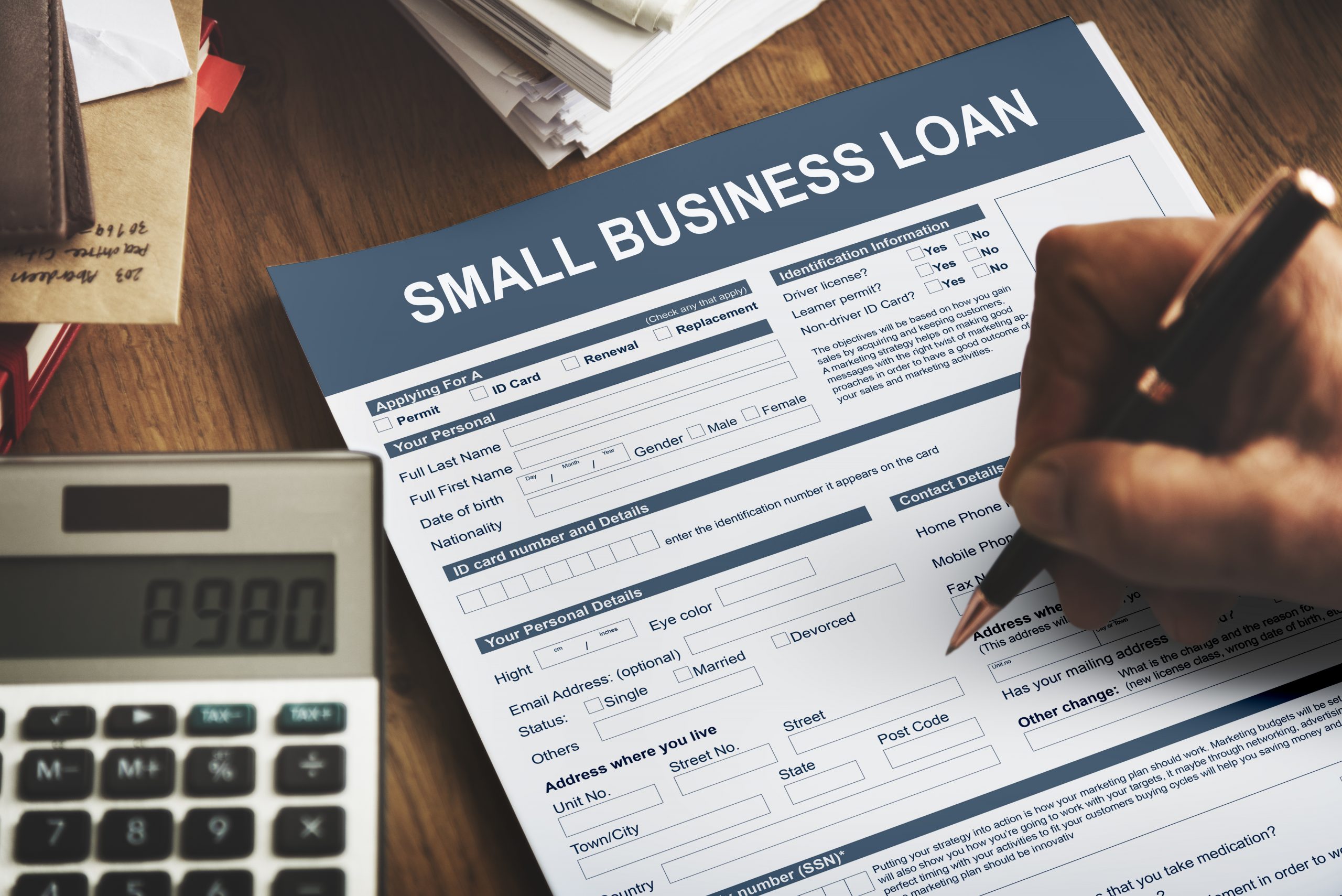Do you dream of being rich and successful? Who doesn’t? Every day thousands of people come up with new ideas and ways to make it big. Not all of these ideas are destined to succeed, however. The most common reason is lack of sufficient funding. You’re heard the old saying that “failing to plan is planning to fail?” It’s never been truer than when it comes to funding your small business.
Small businesses are the heart and soul of the American Dream. According to the Census Bureau’s most recent survey of small businesses, most businesses in America are in fact small businesses. Businesses with fewer than 100 workers make up 98.2% of 5.6 million businesses in America. Not only does that mean you’re in good company, it means that getting funding for your business isn’t going to be as hard as you imagine. That doesn’t mean it’s going to be easy, either.
There is plenty of good news, though. Many startup business owners don’t realize how much money is available to them to help them succeed. The banks and people who help business by lending money want those businesses to succeed, because your success is their success, too. They don’t make money if you fail.
The following six ways to fund your small business dream will give you some ideas of what’s available to small businesses and how to go about getting the money you need to make your business a success. It’s important that you take the time to review each of the different options and decide which one is best for you. It always helps to have a competent financial advisor that can explain the pros and cons of each of the different ways to fund your business.
How Much Funding Do You Need?
Getting your business started does not have to be as costly as you might think. There are many small businesses that get their start with less than $10,000 in startup funding. A little less than half of those get started for only $5,000. That doesn’t mean a larger loan won’t make things go more easily in the beginning, either. Some people feel that having a large business loan is too much pressure in the beginning; others thrive on that sort of pressure. It all depends on your personality. Trust your instincts.
If you’re going the route of requesting significant financial loan, a good rule of thumb is to try and secure enough funding to operate your business for eight to twelve months after you reach your break-even point. This includes your fixed operating costs, your best estimate for your variable costs, and of course, your labor costs. What is your break-even point? It’s when your revenue is equal to you costs. It’s an exciting milestone to reach for any business, because it proves that your business is not only viable, but growing. It’s also an important point to include in your business plan.
Your business plan will play a critical role in helping determine how long it will take to become self-sufficient. Create a solid business plan and use it as your road map for business success. Once you have a clear picture of what your business finance requirements will be, you’ll be able to figure out how long it will take until you’re making more money than you’re spending (i.e., when you’ll become profitable).
Be prepared for everything. Getting a loan means speaking to people who want to be assured that the person they’re financing is prepared for the business. Spend time online doing research, talk to business owners in your area, and find a good financial consultant to help you sort out all of your costs before going to a lending institution or investor with a loan request. Practice making your presentation in front of a mirror, with family, and your close friends. Know your facts and be ready to answer any question you’re asked. Then try to get funded in one of the following six ways.
Self-Funding or Personal Loans
If you have scrimped and saved and have all of the money you need for startup costs, you’re probably going to be incredibly successful in your business. Not many people start their new business ventures by having all the funds readily available, much less having it all on their own. Funding your business entirely by yourself has one distinct advantage: you don’t have to share your success with anyone else. There are no bankers, no investors, it’s all you. And that’s something to be proud of. The flip side is that you’re taking 100% of the risk.
You can go to your bank and apply for a personal loan for your business. This means that the bank will decide on whether or not to grant you a loan based on your own personal credit score and history with the bank. If you do secure the personal loan, it means that the loan is going to be tied to your personal credit score, and vice versa. If there are any problems with your credit score, they could be an important factor in the future.
Another source for personal loans is friends and family. Even though you’re asking people who you’ve known a long time and trust, it’s a good idea to show them your business plan and give them your official pitch. This will give them the confidence to lend you the money. Make sure you come up with an official arrangement for paying back the loan as well. It will help your personal relationship in the long run.
Small Business Loans
If your financial history and credit are good, you can go to your bank for a small business loan. Your bank will review your business’ credit history with the big three credit bureaus, as well as your own financial history with the bank, and if you qualify for a small business loan, it won’t be linked to your personal credit score. One of the mistakes new business owners make is not realizing that the business, as a separate legal entity, has a completely different credit score than your personal credit score.
You can also apply for a secured bank loan for your small business. A secured loan requires you to guarantee your loan with business assets. The advantage of this type of loan is that the interest rates are usually lower, making it easier to pay off the loan and interest. Consider applying for this type of loan if you know you’ll be getting a large payment in the near future.
Have your business plan – including a detailed financial plan – ready for the bank loan officer when you apply for the loan. Show the bank that you are prepared and organized.
Invoice Factoring
Let’s say your business is already turning a healthy profit. Sales are up, your workers are happy, and things are going well. Over dinner a friend asks you why you’re still in such a small office space? Expand, they tell you. You turn it over in your mind and decide that now is the right time to take the next big leap forward.
After working out the numbers with your accountant, you realize that you can, in fact, pull this off. The only hitch is that the money you have in the business hasn’t been paid yet. The money, on paper, is in accounts receivable. You’ll get it, but only over the course of months. Just then, your real estate agent calls with “the perfect” location for your growing business. How are you going to get the money you need for a deposit, moving, and new fixtures for the new office?
Your accountant suggests you use invoice factoring to get the money up front. When you decide to use invoice factoring to find your business, you sell your accounts receivable to a third-party (the “factor”), and they pay you cash for it. The amount they pay is discounted from the total amount of receivables. It means taking less money than if you waited to collect it all over time, but it also means you will have the cash in hand to position your company for growth and profit.
SBA Loans
SBA, or Small Business Association loans, are loans that are offered by participating lenders to small businesses. These loans are backed by the SBA, meaning they’re acting as a guarrantor for you so you can get the loan.
There are two primary types of SBA loans. A working capital loan can be used for refinancing debt, loans for exports, or financing for seasonal expenses like extra inventory or labor. Fixed asset loans are for more large-scale business expenses. In referring to the above example, you would apply for a fixed asset SBA loan for additional furniture and equipment. You can also use a fixed asset loan for large scale construction, machinery, and other big-ticket expenses, where paying back the loan would happen over a longer period of time.
Getting approved for an SBA loan isn’t easy – the borrow requirements are strict, and time to funding takes a long time, so this type of loan isn’t for everyone. It’s also important to note that the average SBA loan is less than $400,000. If your business needs more, you would need to find a lender through the SBA that will provide loans for large amounts.
Credit Cards
There are a few ways to fund your business using credit cards. You can use your personal credit card to make all of your business purchases. While this might seem to be the most expedient method, use with caution. Your personal credit card is tied to your personal credit score. If you start to fall behind, you could end up affecting your personal credit score negatively.
Look into getting a business credit card instead. It’s the same as a personal credit cards, except it isn’t connected you your personal credit score, rather it’s your business’ credit score. Having a separate business credit card also means it’ll be easier for you or your bookkeeper to keep track of your business spending habits. Look for a credit card that offers rewards that are useful to your business. Cash back is always a good reward, but if you’re driving for a significant amount of time each day for your business, a credit card with rewards for filling up with gas might be a better one. It would certainly be better than air miles if you don’t need to fly for business (yet)
Many credit card companies offer a secured credit card. This is a card where you put down a small sum as a deposit for your card. The interest rates for secured credit cards are much lower, too.
Crowdfunding or Raising Money
Over the last few years, crowdfunding has become a very popular and relatively low-risk method of investing in your business. The idea is simple: by reaching out through personal contacts and social media, you can get people from around the globe to help you realize your vision for your business.
Set up your crowdfunding campaign by creating funding tiers. At each level of funding, offer a reward to your backers for their contribution. The first tier might be the product you’re trying to launch. A higher tier might provide multiple products, or some sort of personalization, customization, or other incentive that shows your appreciation for your backer. Be creative; you never know what is going to appeal to a potential crowdfunding participant.
The number one reason most small businesses fail to prosper is poor financial planning. In order to get funding for your business, you’re going to have to put in long hours doing research about businesses similar to yours. Preparing a detailed business plan to present to loan officers and investors is going to take effort and hard work to get it right. You’re going to have to make appointments to meet with bankers, loan institutions, private lenders, and investors all over your area. You may not get approved for every loan, just like you may not secure every potential client account. These setbacks are just part of being an entrepreneur – but don’t let them make or break your spirit, or your business. The solution you need is out there, just waiting to be discovered.





